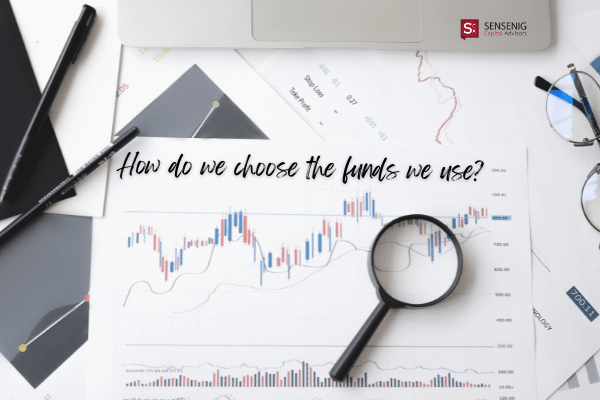You likely will agree there is rarely a shortage of available opinions on how best to manage your investment savings. As investment advisors, we have our own thoughts and opinions on the subject – as well we must. There are so many sources of information that it is sometimes difficult to keep up with it all, and we watch our reading files begin to mount with the articles and re-prints in anticipation of catching up another day. Sometimes we find it helpful to look back in our files forinformation that remains particularly relevant, no matter the economic environment. Such is this one shared in 2000 by H. Bradlee Perry, a former President and Chairman of David L. Babson & Co.
Perry noted the consistent relevance of the following key principles of investing:
-
Markets are unpredictable and ill-suited to forecasts
-
Long-term fundamentals are key
-
Investor emotion leads to volatility
-
Valuation discipline should guide investment selection
-
Perspective and patience are rewarded
These essential truths, as he referred to them, are just as applicable today as they were ten years ago. Perhaps they are even more applicable as we consider how we might best achieve our goals and objectives in an uncertain environment.
One of the biggest obstacles to meaningful investment results is the tendency to place too much emphasis on the short-term outlook. Bryan Olsen, Head of Portfolio Consulting at Charles Schwab, recently provided this example:
“Imagine a cross-country car race that starts in downtownManhattanduring rush hour. One racer sees bicycle messengers speeding by in the stop-and-go traffic. Becoming impatient, he jumps out of his car, trading it for a bicycle. Once out of Manhattan, as other racers still in their cars pass him, he quickly realizes his short-term decision was unwise in light of his long-term goal of winning the race.”
It may seem a little silly for this racer to trade in his car for a bike, yet many investors do the same thing every day. As Olsen mentions, they lose sight of the strategy that it will take to get their prize. Although many investors claim to understand the benefits of long-term investing, their actions show a short-term focus.
Right now one of the concerns in the economy is whether we’re headed for more of an inflationary or a deflationary environment. Will our current heavy government borrowing flood the system with money, leading to rampant inflation which will erode our purchasing power? Or, will all the debt and liquidation of distressed financial assets paralyze the economy and send prices falling in a deflationary environment? Some would have you believe that unless you get this issue exactly right and overhaul your portfolio accordingly, you will not succeed. Realistically, we believe what matters most in this regard is being best prepared for either possibility, while diversifying and maintaining a long-term perspective.
Depending on your own individual circumstances, a rise or fall in the cost of living can hold differing effects on your financial well being. In retirement, falling prices could be for you while inflation might be detrimental on a fixed-income. One of the primary reasons for owning assets that have the ability to appreciate in value and throw-off increasing cash flow (income) is to help alleviate this so-called “fixed” portion of your income in retirement. Stocks – specifically more generous dividend paying stocks that provide steady cash flow streams – can provide protection from mild inflation as well as low levels of deflation. For example, equities tied to commodities such as big energy companies with healthy dividend payouts can be beneficial during deflation. There are numerous other examples of fundamentally sound and above average dividend paying stocks as well.
Figure 1, with data compiled by Bespoke Investment Group,Harrison,N.Y., illustrates that for the four deflationary periods since 1940, as defined by a year-over-year fall in the Consumer Price Index (CPI), the S&P 500 broader market index rose on average 19.7%. However, during the five periods of high inflation since 1940, as defined by a rise in the CPI of more than 8.5% year-over-year, the S&P 500 fell an average of 2.15%. The data would indicate the periods of high inflation were longer and more painful than the deflationary periods.
The bottom line however is that everyone’s situation and corresponding comfort level is different, thus the need to have your own asset allocation targets tailored to your particular goals and objectives. And of course, investors should not lose their long-term focus, regardless of economic forecasts. We believe too many mistakes are made when investors change their game plan nearly every time the economic climate changes. Remember that “markets are unpredictable and ill-suited to forecasts.”
The Schwab Center for Financial Research, with data from Morningstar, recently published a study showing the correlation between risk, length of holding periods, and annualized total returns. As we have long known and as they illustrate in Figure 2, having a long-term mindset and lengthening the time you hold investments can often reduce the probability of experiencing negative returns. This is not to say that a shift in circumstances might not make a given stock’s sale advisable; obviously things can change over time. Also, changes in circumstances on a broader scale, such as major financial events, can bring about a need to alter asset allocation targets.
Schwab studied the highest return, lowest return, and average return of the S&P 500 over various holding periods from 1926 to 2009. They found that as you move from a one-year holding period to a three-year, 10 year, and finally to a 20-year holding period, the number of negative returns experienced goes down. It shows there has never been a 20-year period with a negative return.
Certainly there is no single, magic formula to faring well in stocks over the long term, but there are a number of sensible investment strategies. The key is to follow one strategy and with discipline, because unfortunately no particular approach works well every single year. Moreover, keeping a long-term frame of mind doesn’t mean ignoring your portfolio; it means developing a plan based on realistic long-term expectations, not short term trends.
Often there seems to be a tendency to misjudge risk by focusing only on the more immediate while neglecting the big picture. This is certainly the case with investing. For example, does it matter that the S&P 500 dipped 1.5% today, or does it matter more that you retire with only a portion of the savings you need to be comfortable in retirement? Harvard Professor Daniel Gilbert provided a good analogy, one of a person reacting to immediate threats such as a tree falling while being too cavalier about long-term risks such as the deterioration of health that comes from not exercising.
Another of the essential truths has to do with market volatility brought about by investor emotions. We know how dramatically investor psychology can quickly change, causing sharp increases and decreases in security prices. This is much more prevalent today due to the rapid flow of news stories throughout the investment community and the resulting super-fast reaction to that news. Today the role emotions play in all of this is often referred to as behavioral risk under the heading of Behavioral Finance. And it is probably safe to say that behavioral risk adversely affects nearly all investors to some degree, resulting in increased market volatility.
The good news brought about by these swings in investor emotions is the buying opportunities they present. Just as it is true there are fewer bargains available when the majority of investors are optimistic, it is also true that good values and buying opportunities are more prevalent when the overall investor mood is one of doom and gloom. Taking advantage of these swings is just another way in which to make certain your goals and objectives are kept at the forefront.
The bargains or buying opportunities alluded to here are brought about by measurements of value consisting of the relationship of the price of a stock to current and projected earnings and dividends – the fundamental approach to which we subscribe. The price/earnings ratio, or P/E, measures the amount of money investors are paying for a company’s earnings. The more uncertainty there is, the lower the P/E will be and vice versa. But while emotional factors very often temporarily upset the relationship between price and value, eventually the two become correlated, thus the desire to maintain a long-term view. Incidentally some experts feel this fundamental type of analysis may be less relevant to investors today due to such factors as trading patterns, macroeconomic data, and a more volatileU.S.economy. And, while these factors may well exist in today’s environment, and pressure on certain types of valuation methods exists, over the longer-term as individual companies increase their earnings and uncertainties begin to subside, investors will be rewarded. A business is still only worth what it can earn in profit and pay in dividends over the long-term.
Lastly, patience remains a key ingredient for the long-term investor. Even the best of companies go through difficult stretches of time where lower profits are reflected in lower stock prices. However, as we stated before, day-to-day changes in prices need not be a concern. What matters are the future prospects of a company at a given point in time. You can be sure the principles mentioned here will continue to guide us through changing markets during uncertain times as well as the more restrained view held in the most economically robust times. For long-term investors, these fundamentals have not yet gone out of style. And despite the current uncertainties, they still apply. After all, by definition, “fundamental” connotes something essential and of central importance. Hopefully we can take some comfort in knowing these principles still apply to our long term financial health and well being.
Disclaimer
The information contained herein is intended to be educational and informational in nature only and has been obtained from sources believed reliable but is not necessarily complete and cannot be guaranteed. This information is not intended to be a substitute for specific individualized tax, legal or investment planning advice. Readers are encouraged to consult with their accountant, financial advisor, attorney or other professional. The opinions expressed herein are dated and subject to change over a period of time. Neither the information presented nor any opinion expressed constitutes a representation by Sensenig Capital Advisors, Inc. or a solicitation of the purchase or sale of securities. No professional services are deemed rendered to the readers of this newsletter.




